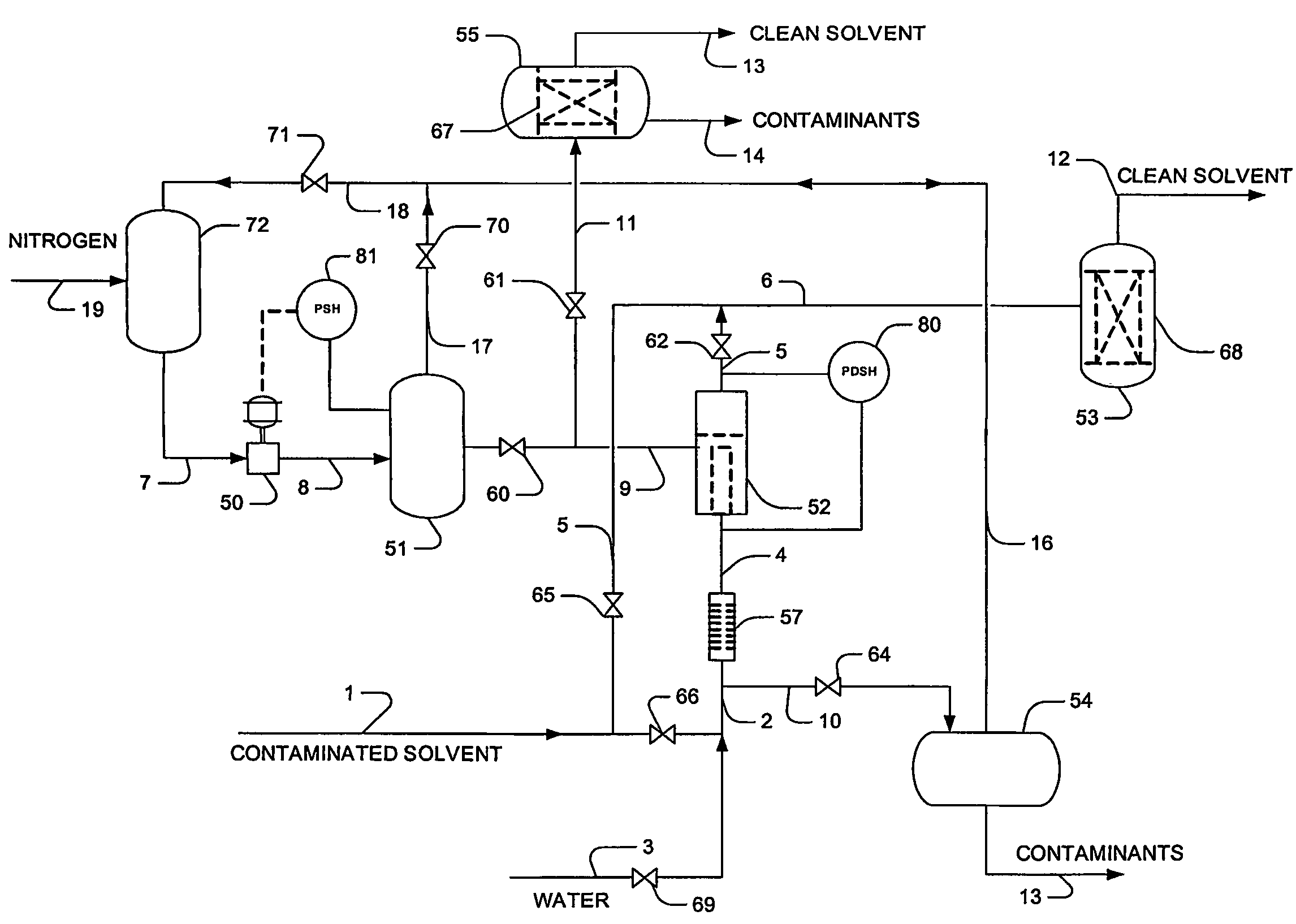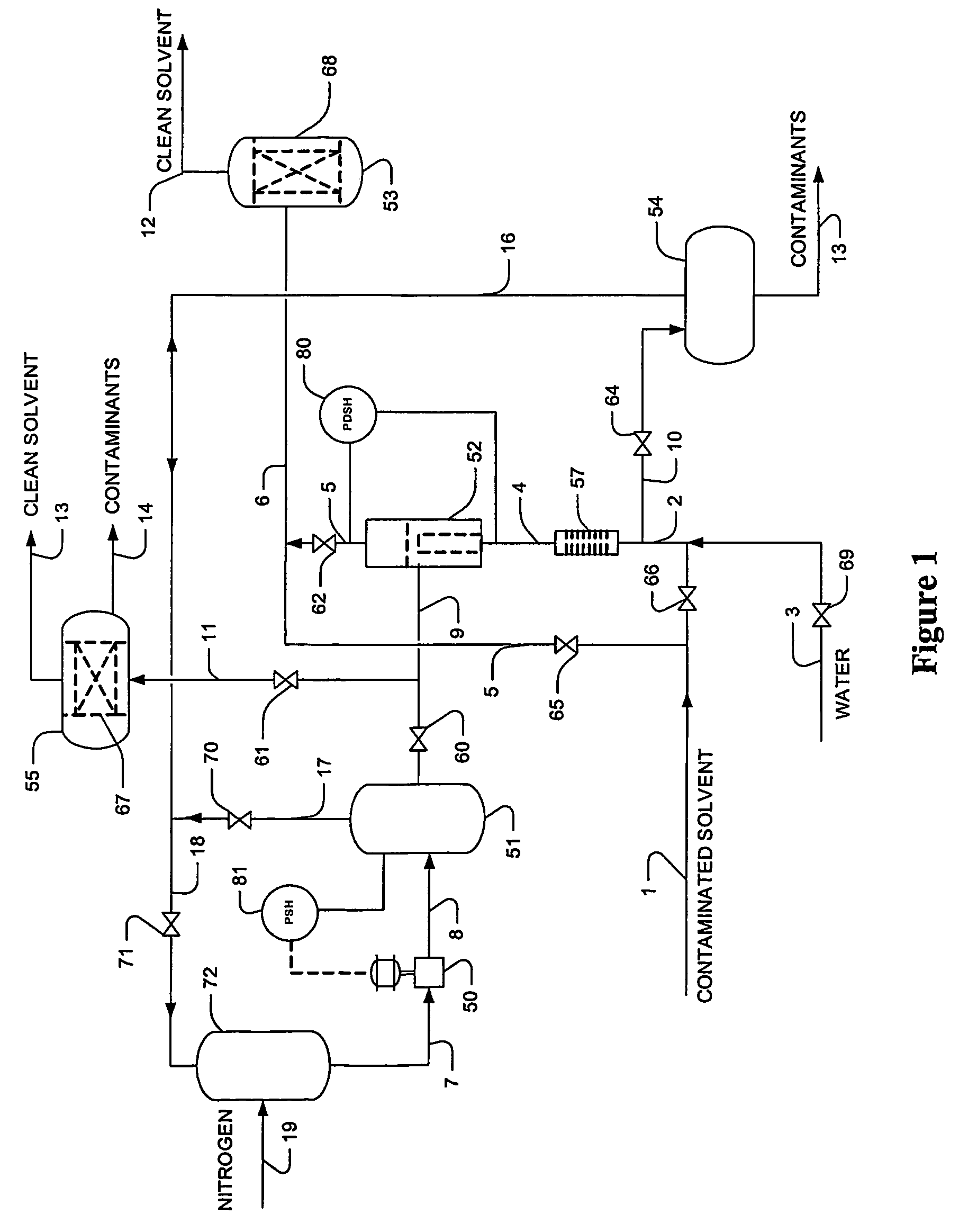Solvent filtration system and methods
a solvent and filter system technology, applied in the direction of filtration separation, sedimentation settling tanks, separation processes, etc., can solve the problems of contaminating the environment, endanger operating personnel, and undetected acceleration of pipe erosion, so as to minimize solvent loss and eliminate displacement vapors from the environment
- Summary
- Abstract
- Description
- Claims
- Application Information
AI Technical Summary
Benefits of technology
Problems solved by technology
Method used
Image
Examples
Embodiment Construction
[0014]FIG. 1 depicts an exemplary filtration system comprising a prefilter 52, a main filter 53, a fluid source 3 that provides the fluid to purge solvent from the prefilter 52 during prefilter regeneration, a gas source 51 that provides the gas to purge particulates from the prefilter 52, and respective associated lines and valves to provide recycling circuits for the solvent, the fluid, and the gas. Together, these units are designed to remove particulates (e.g., nickel carbonyl, iron sulfides, nickel sulfide, and other corrosion products) and contaminants from a circulating solvent while preventing loss and / or emission of the solvent, fluid, and / or gas.
[0015]In filtering operation a portion of contaminated solvent is routed via line 1, valve 66, and line 2 to the prefilter 52 (optionally via electrostatic precipitator 57 and line 4), while valve 65 remains closed at that time. Partially filtered solvent stream 5 exits the prefilter 52 and is routed via valve 62 and line 6 to the ...
PUM
| Property | Measurement | Unit |
|---|---|---|
| differential pressure | aaaaa | aaaaa |
| differential pressures | aaaaa | aaaaa |
| differential pressures | aaaaa | aaaaa |
Abstract
Description
Claims
Application Information
 Login to View More
Login to View More - R&D Engineer
- R&D Manager
- IP Professional
- Industry Leading Data Capabilities
- Powerful AI technology
- Patent DNA Extraction
Browse by: Latest US Patents, China's latest patents, Technical Efficacy Thesaurus, Application Domain, Technology Topic, Popular Technical Reports.
© 2024 PatSnap. All rights reserved.Legal|Privacy policy|Modern Slavery Act Transparency Statement|Sitemap|About US| Contact US: help@patsnap.com









